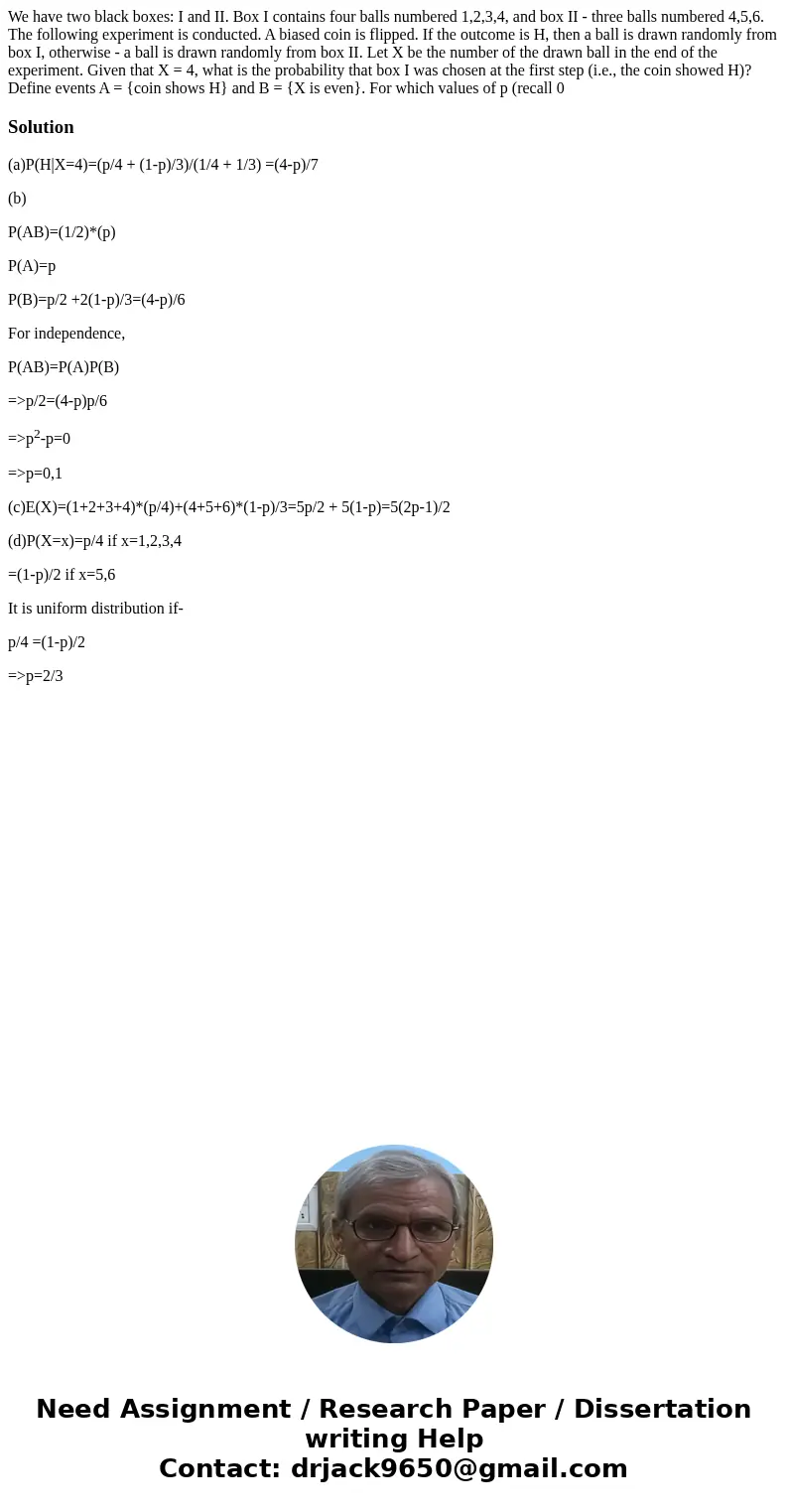We have two black boxes I and II Box I contains four balls n
We have two black boxes: I and II. Box I contains four balls numbered 1,2,3,4, and box II - three balls numbered 4,5,6. The following experiment is conducted. A biased coin is flipped. If the outcome is H, then a ball is drawn randomly from box I, otherwise - a ball is drawn randomly from box II. Let X be the number of the drawn ball in the end of the experiment. Given that X = 4, what is the probability that box I was chosen at the first step (i.e., the coin showed H)? Define events A = {coin shows H} and B = {X is even}. For which values of p (recall 0 
Solution
(a)P(H|X=4)=(p/4 + (1-p)/3)/(1/4 + 1/3) =(4-p)/7
(b)
P(AB)=(1/2)*(p)
P(A)=p
P(B)=p/2 +2(1-p)/3=(4-p)/6
For independence,
P(AB)=P(A)P(B)
=>p/2=(4-p)p/6
=>p2-p=0
=>p=0,1
(c)E(X)=(1+2+3+4)*(p/4)+(4+5+6)*(1-p)/3=5p/2 + 5(1-p)=5(2p-1)/2
(d)P(X=x)=p/4 if x=1,2,3,4
=(1-p)/2 if x=5,6
It is uniform distribution if-
p/4 =(1-p)/2
=>p=2/3

 Homework Sourse
Homework Sourse